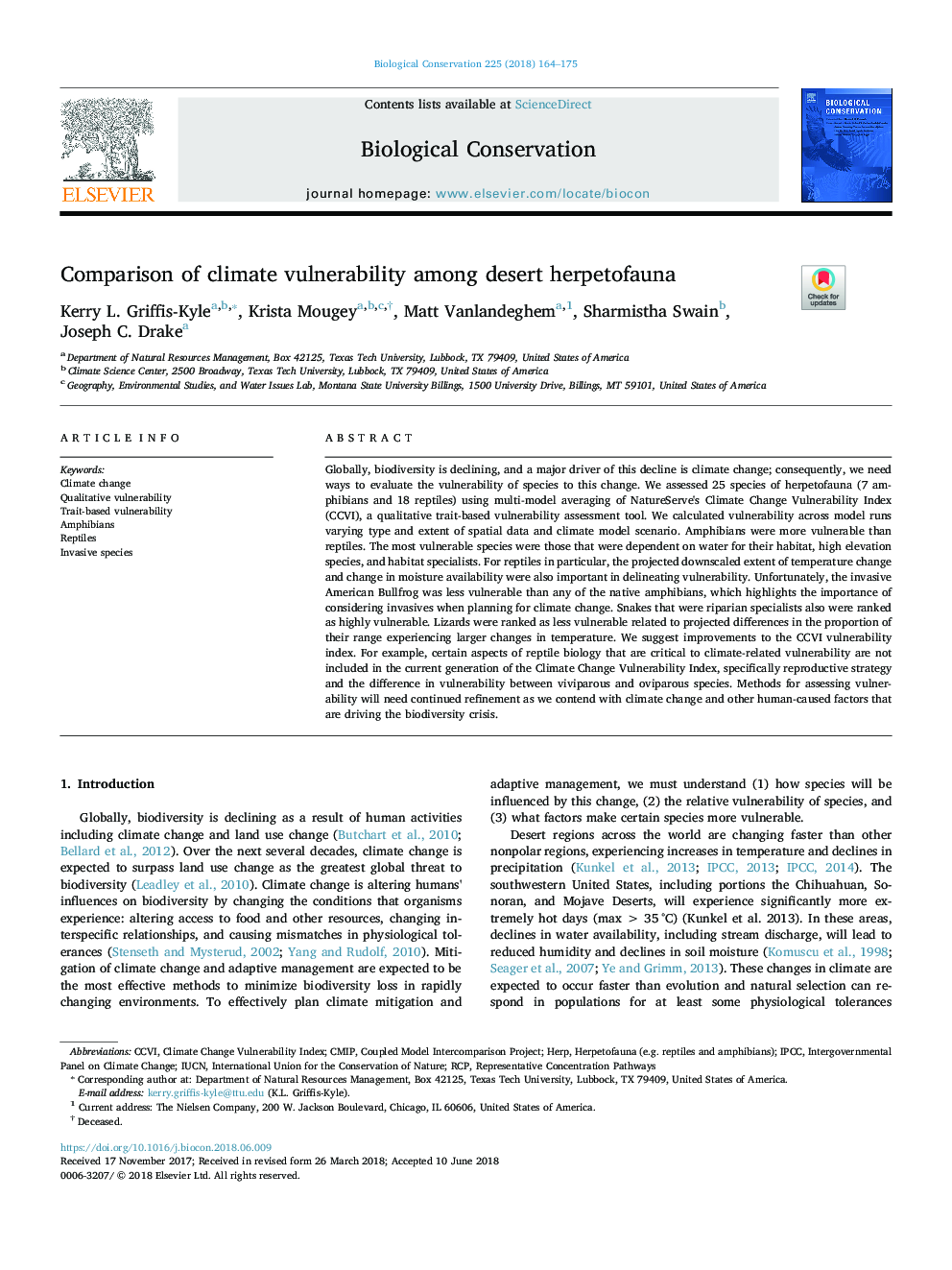| کد مقاله | کد نشریه | سال انتشار | مقاله انگلیسی | نسخه تمام متن |
|---|---|---|---|---|
| 8847147 | 1617880 | 2018 | 12 صفحه PDF | دانلود رایگان |
عنوان انگلیسی مقاله ISI
Comparison of climate vulnerability among desert herpetofauna
ترجمه فارسی عنوان
مقایسه آسیب پذیری آب و هوا در میان گیاهان زینتی بیابان
دانلود مقاله + سفارش ترجمه
دانلود مقاله ISI انگلیسی
رایگان برای ایرانیان
کلمات کلیدی
RCPIPCCIUCNCMIPInternational Union for the Conservation of NatureClimate change - تغییرات آب و هواReptiles - خزندگانAmphibians - دوزیستانrepresentative concentration pathways - مسیرهای متمرکز نمایندگیHerp - هرپIntergovernmental Panel on Climate Change - هیات بین دولتی در مورد تغییرات اقلیمیInvasive species - گونه های مهاجم
موضوعات مرتبط
علوم زیستی و بیوفناوری
علوم کشاورزی و بیولوژیک
بوم شناسی، تکامل، رفتار و سامانه شناسی
چکیده انگلیسی
Globally, biodiversity is declining, and a major driver of this decline is climate change; consequently, we need ways to evaluate the vulnerability of species to this change. We assessed 25 species of herpetofauna (7 amphibians and 18 reptiles) using multi-model averaging of NatureServe's Climate Change Vulnerability Index (CCVI), a qualitative trait-based vulnerability assessment tool. We calculated vulnerability across model runs varying type and extent of spatial data and climate model scenario. Amphibians were more vulnerable than reptiles. The most vulnerable species were those that were dependent on water for their habitat, high elevation species, and habitat specialists. For reptiles in particular, the projected downscaled extent of temperature change and change in moisture availability were also important in delineating vulnerability. Unfortunately, the invasive American Bullfrog was less vulnerable than any of the native amphibians, which highlights the importance of considering invasives when planning for climate change. Snakes that were riparian specialists also were ranked as highly vulnerable. Lizards were ranked as less vulnerable related to projected differences in the proportion of their range experiencing larger changes in temperature. We suggest improvements to the CCVI vulnerability index. For example, certain aspects of reptile biology that are critical to climate-related vulnerability are not included in the current generation of the Climate Change Vulnerability Index, specifically reproductive strategy and the difference in vulnerability between viviparous and oviparous species. Methods for assessing vulnerability will need continued refinement as we contend with climate change and other human-caused factors that are driving the biodiversity crisis.
ناشر
Database: Elsevier - ScienceDirect (ساینس دایرکت)
Journal: Biological Conservation - Volume 225, September 2018, Pages 164-175
Journal: Biological Conservation - Volume 225, September 2018, Pages 164-175
نویسندگان
Kerry L. Griffis-Kyle, Krista Mougey, Matt Vanlandeghem, Sharmistha Swain, Joseph C. Drake,
